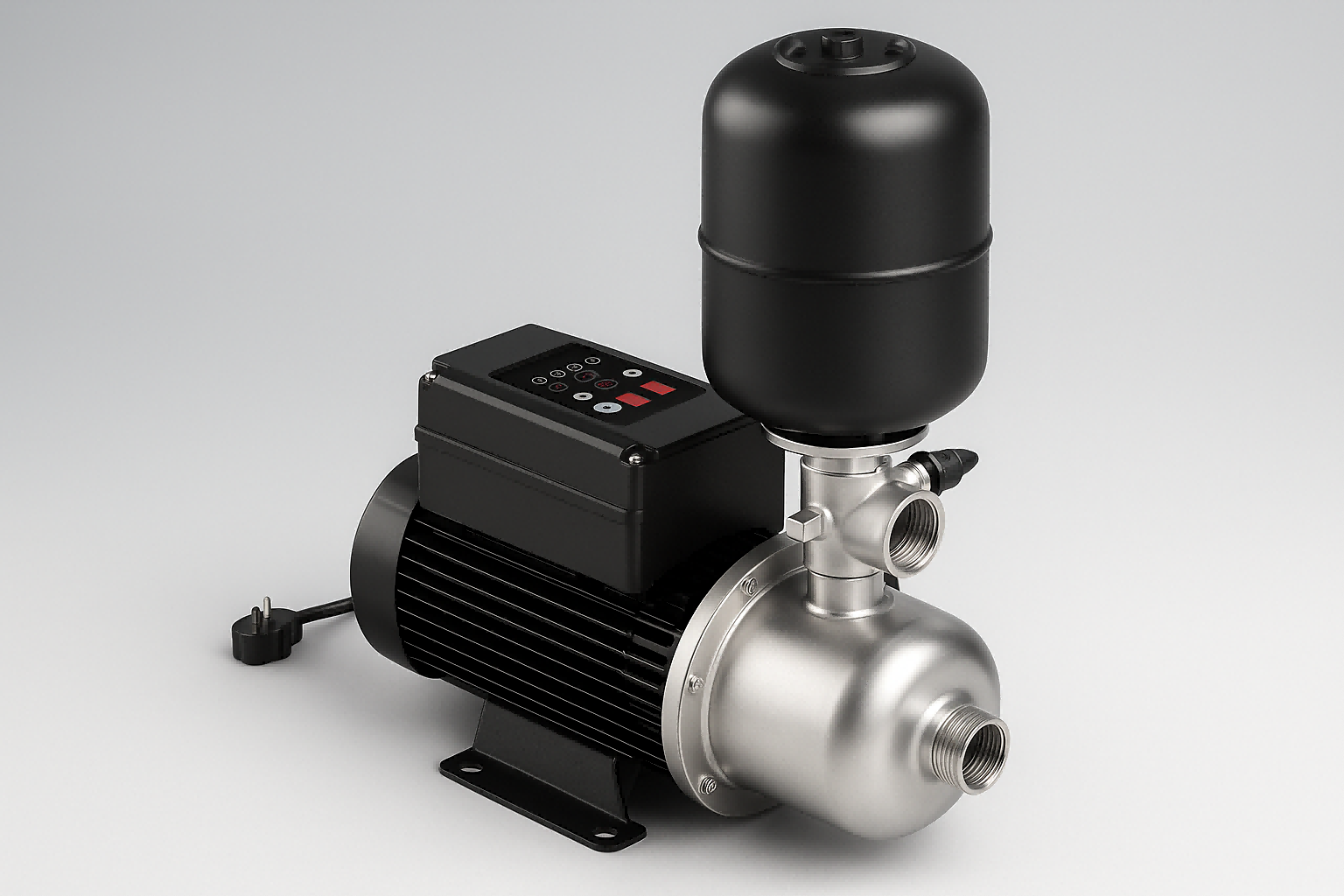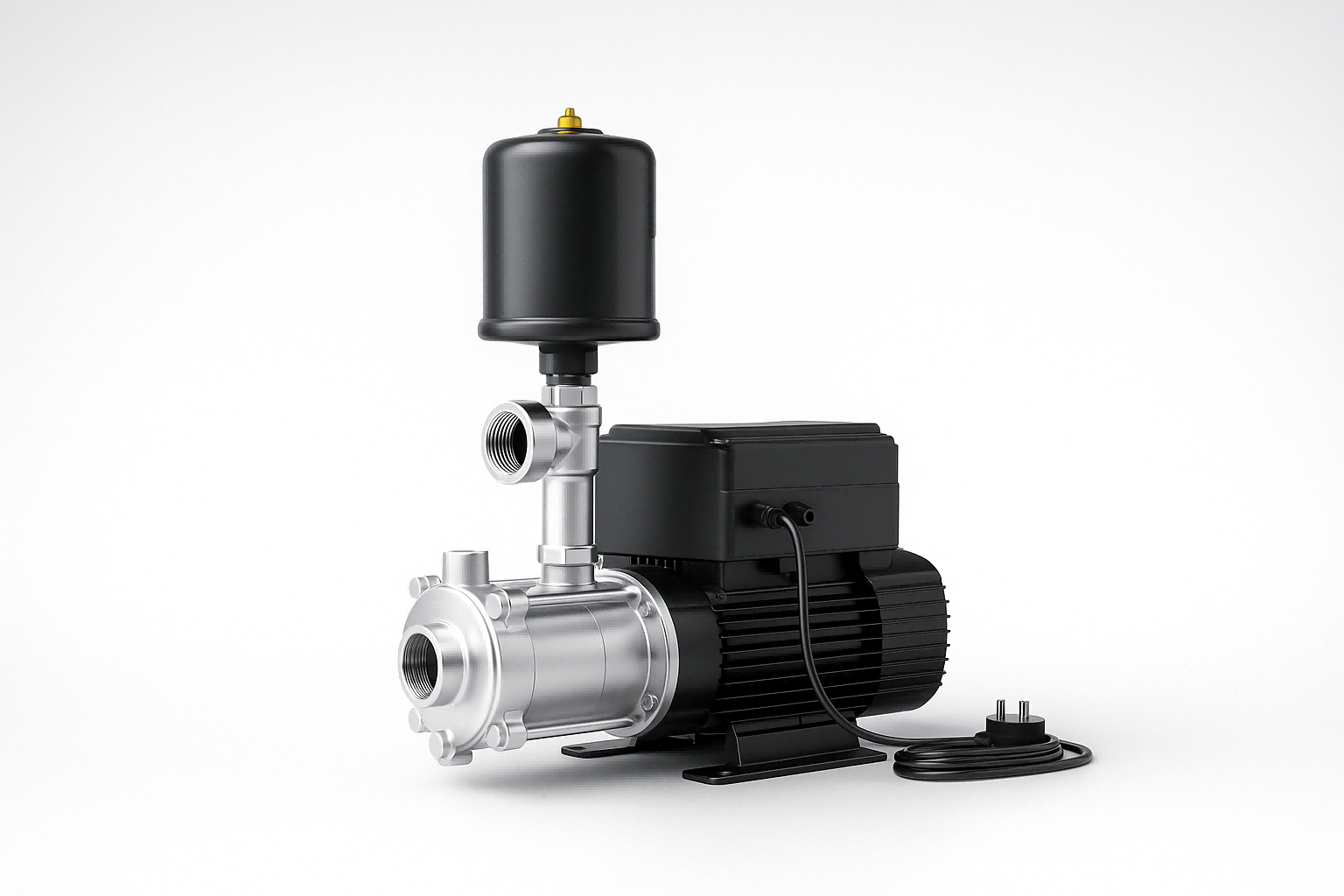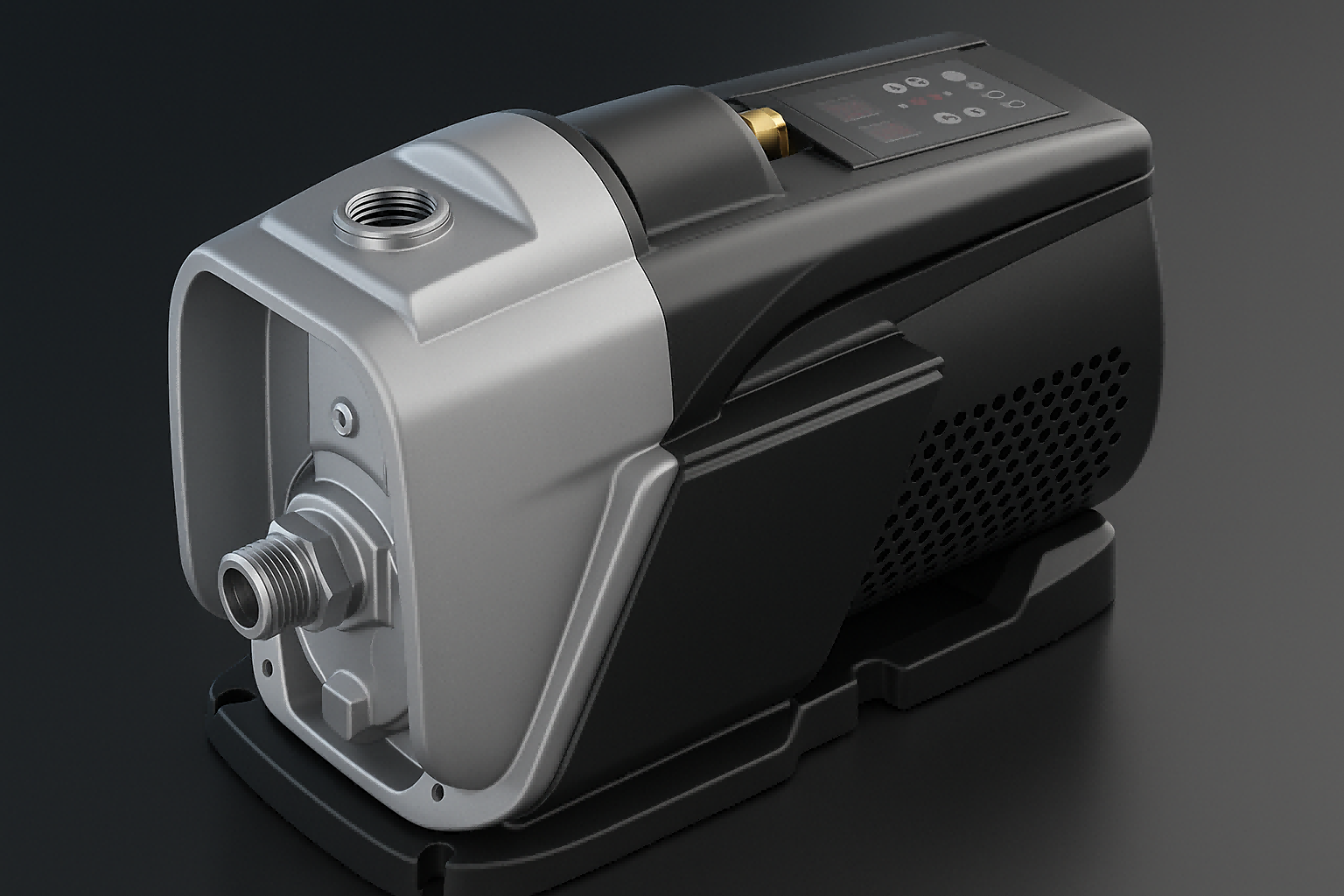Frustrated with weak showers and trickling faucets?
Low water pressure turns simple tasks into annoyances.
Understanding the root cause is the first step toward a powerful, consistent flow.
The most common cause of low water pressure is often a clogged aerator on a single faucet or showerhead. For whole-house issues, partially closed main water valves, hidden leaks, or corroded pipes are frequent culprits. Debris and mineral buildup are common underlying problems in many of these cases.

Low water pressure can be a simple fix or a sign of a deeper plumbing problem.
It can affect a single fixture, a specific area of your home, or the entire property.
Identifying where the pressure drop occurs is key to diagnosing the issue correctly.
Before calling a professional, there are several common causes you can investigate yourself.
Let's explore these issues one by one to help you restore a strong and steady water flow.
Debris Build-Up and Corrosion in Pipes
Struggling with water that barely flows?
Years of unseen buildup could be choking your pipes.
This internal blockage drastically reduces water pressure and affects your entire home.
Debris like sand, dirt, and mineral deposits from hard water can accumulate inside pipes, narrowing the passage for water. In older homes, galvanized steel pipes can corrode from the inside out, creating rust buildup that severely restricts flow and degrades water quality.
Over time, your home's plumbing system acts like a filter for everything in the water supply.
This means sediment, minerals, and even small particles from the municipal main can settle inside your pipes.
This process is accelerated in areas with hard water, where minerals like calcium and magnesium create a thick layer of scale.
Corrosion is a more destructive but equally common issue, particularly in homes built before the 1960s that used galvanized steel pipes.
As these pipes age, their zinc coating wears away, exposing the steel to water and causing it to rust.
The rust, or corrosion, not only restricts water flow but can also break off, leading to discolored water and further blockages in fixtures.
Identifying Pipe Blockages
You can sometimes diagnose this issue without opening walls.
If the low pressure started gradually and has worsened over years, buildup is a likely suspect.
You might also notice flakes of rust or sediment in your water, especially when you first turn on a tap.
Another clue is if the low pressure is widespread throughout the house, affecting both hot and cold lines.
Modern Solutions to Old Pipe Problems
Fixing widespread corrosion or buildup isn't a simple DIY task.
While chemical cleaners exist, they can damage older pipes and offer only a temporary solution.
The most effective and permanent solution is replacing the affected pipes.
Modern plumbing materials offer significant advantages over older ones.
| Material | Key Benefits | Lifespan |
|---|---|---|
| PEX (Cross-linked Polyethylene) | Flexible, resists scale buildup, freeze-resistant, easy to install. | 50+ years |
| Copper | Durable, corrosion-resistant, natural antimicrobial properties. | 50+ years |
| CPVC (Chlorinated Polyvinyl Chloride) | Handles hot and cold water, corrosion-proof, smoother interior surface. | 50-75 years |
Upgrading your pipes might seem like a large project, but it's an investment in your home's health and functionality.
It not only solves low water pressure but also prevents future leaks and improves water quality for decades to come.
Valve Issues: Shutoff and Meter Valves
Notice a sudden drop in water pressure after a recent repair?
A valve that wasn't fully reopened could be the simple cause.
This oversight can restrict your home's entire water supply.
Your home has at least two main valves controlling water flow: the main shutoff valve and the water meter valve. If either of these is partially closed, it acts as a bottleneck, reducing water pressure to every fixture in your house. These are often adjusted during plumbing work and not fully reopened.
It's a surprisingly common scenario.
A plumber, utility worker, or even a homeowner performs a repair, shutting off the water for safety.
Once the work is done, the valve is reopened, but not all the way.
Even a valve that is 75% open can cause a noticeable drop in pressure and flow rate.
Understanding where these valves are and how they work is a crucial piece of home maintenance knowledge.
Locating and Checking Your Valves
Finding your main valves is the first step.
- Main Shutoff Valve: This valve is typically located inside your home where the main water line enters the property. Look in the basement, a crawl space, or a utility closet near the front of the house. It will have either a wheel-like handle (gate valve) or a lever handle (ball valve).
- Water Meter Valve: This valve is usually located outside, near the street, under a metal or plastic cover. It's often the responsibility of the utility company, but it's good to know its location. There may be one valve before the meter and one after.
How to Ensure Valves Are Fully Open
Checking the valves is straightforward.
- Ball Valves (Lever Handle): The valve is fully open when the lever is parallel to the pipe. If it's at an angle, it's partially closed. If it's perpendicular, it's fully closed.
- Gate Valves (Wheel Handle): Turn the wheel counter-clockwise as far as it will go. Do not force it. Once it stops, it is fully open. It's a good practice to then turn it back clockwise just a quarter-turn to prevent the valve from seizing in the open position over time.
If you inspect your valves and find one is partially closed, opening it fully may instantly solve your pressure problems.
This simple check can save you the cost and hassle of a service call.
However, if a valve is stuck or seems broken, do not force it.
Applying too much pressure can break the valve stem, creating a much more serious plumbing emergency.
In that case, it's time to call a professional.
Faulty Pressure Regulator
Is your water pressure too low throughout the house, despite all valves being open?
Your pressure regulator might be failing.
This one device controls pressure for your entire home.
A pressure regulator, or pressure-reducing valve (PRV), is a bell-shaped device that lowers the high pressure from the municipal supply to a safe level for your home's plumbing. When it fails, it can get stuck in a partially closed position, causing chronically low water pressure everywhere.
Not every home has a pressure regulator.
They are typically installed in areas where the municipal water pressure is very high (over 80 psi).
High pressure can damage appliances like washing machines and dishwashers, create water hammer, and cause premature failure of pipes and fixtures.
The PRV acts as a gatekeeper, ensuring the pressure entering your home stays within a safe and consistent range, usually between 45 and 60 psi.
Over a lifespan of 10-15 years, the internal springs and diaphragms can wear out, leading to malfunction.
Symptoms of a Failing Pressure Regulator
A failing PRV can cause several issues, not just low pressure.
- Low Water Pressure: The most common symptom, as the valve gets stuck and restricts flow.
- High Water Pressure: The valve can also fail in the open position, leading to sudden spikes in pressure.
- Fluctuating Pressure: Pressure that changes wildly from low to high can indicate a faulty regulator.
- Water Hammer: Loud banging noises in your pipes when you turn off a faucet can be a sign the PRV is no longer absorbing pressure shocks.
If you are experiencing any of these symptoms, a faulty pressure regulator is a strong possibility.
You can confirm your home's pressure by using a simple pressure gauge, which screws onto an outdoor hose bib.
Repairing or Replacing the Regulator
Adjusting a pressure regulator is sometimes possible.
Many have a screw on top that can be turned to increase or decrease the outlet pressure.
However, this often provides only a temporary fix if the internal components are failing.
Replacement is typically the best long-term solution.
Due to the complexity and the need to shut off the main water supply, replacing a PRV is a job best left to a licensed plumber.
A professional can ensure the new regulator is installed correctly, set to the proper pressure, and a new pressure gauge is installed for easy checking.
This restores not only your water pressure but also the safety and integrity of your entire plumbing system.
Plumbing Leaks
Experiencing a mysterious drop in water pressure without any other obvious cause?
A hidden leak could be secretly stealing your water.
Even small leaks can lead to significant pressure loss and property damage.
Any leak in your plumbing system, no matter how small, creates a path for water to escape. This diversion of water means less is available to reach your fixtures, resulting in lower overall pressure. Leaks can occur anywhere, from visible pipes under sinks to hidden lines within walls or underground.
Think of your plumbing system as a closed loop.
When everything is working correctly, the pressure remains contained and directed to your faucets and appliances.
A leak introduces an opening in that loop.
Water, following the path of least resistance, will escape through this opening.
This constant loss of water volume directly translates to a loss of pressure at the tap.
A large, obvious leak is easy to spot, but tiny pinhole leaks can be much more insidious.
They might not create a visible puddle but can still cause a noticeable pressure drop over time, while also creating a hidden environment for mold, rot, and structural damage.
How to Find a Hidden Leak
The best tool for finding a hidden leak is your water meter.
Follow these steps for a simple whole-house leak test:
- Turn Off All Water: Make sure every faucet, shower, and water-using appliance (like dishwashers and washing machines) is turned off.
- Locate Your Water Meter: Find your water meter, usually in a box near the curb or in your basement.
- Check the Leak Indicator: Most modern meters have a small triangle, star, or gear-shaped dial known as the leak indicator. If this dial is spinning, even slowly, you have a leak somewhere in your system.
- Note the Reading: If there's no leak indicator, write down the numbers on the meter's display. Wait for one hour without using any water, then check the reading again. If the numbers have changed, you have a leak.
Once you've confirmed a leak exists, you can try to narrow down its location.
Listen for hissing sounds inside walls or check for unusually damp or warm spots on floors.
Look for patches of unusually green grass in your yard, which could indicate a leak in the main service line.
The Importance of Immediate Repair
Once a leak is detected, it's crucial to have it repaired immediately.
Beyond the low water pressure and wasted water, ongoing leaks can cause catastrophic damage to your home's foundation, drywall, and electrical systems.
A professional plumber has specialized tools, such as acoustic listening devices and thermal imaging cameras, to pinpoint the exact location of a hidden leak with minimal damage to your property.
Fixing the leak will not only restore your water pressure but also protect your home and save you money on your water bill.
High Simultaneous Demand or Shared Supply Lines
Does your shower turn into a trickle when someone flushes a toilet or runs the dishwasher?
You might be exceeding your plumbing's capacity.
High simultaneous water use can overwhelm your system.
Every home's plumbing system has a maximum flow rate. When multiple fixtures and appliances run at the same time, the demand for water can exceed what the pipes can supply. This divides the available pressure, causing a noticeable drop at every open outlet. This is especially common in homes with older, undersized pipes.
This is a classic plumbing problem that many families experience daily.
The main supply line entering your home has a fixed diameter, which dictates the total volume of water that can pass through it at any given moment.
From there, smaller branch lines run to individual fixtures.
When you turn on a single faucet, you get the full pressure of that branch line.
But when a washing machine, a shower, and a kitchen faucet are all running, they are all competing for that same limited volume from the main line.
The system simply can't keep up, and the pressure drops everywhere.
Shared Supply Lines
In some older neighborhoods or multi-unit dwellings, the problem can be even worse.
Multiple homes might share a single water main from the street.
In this case, you're not just competing with demand inside your own home; you're competing with your neighbors.
If you notice that your water pressure drops consistently during peak hours, like in the morning when everyone is getting ready for work, a shared supply line could be the culprit.
Solutions for Managing High Demand
While you can't always control your neighbor's water usage, you can manage the demand within your own home.
- Stagger Usage: The simplest solution is to avoid running multiple high-demand appliances at once. Try to run the dishwasher and washing machine overnight, and coordinate shower times.
- Install Efficient Fixtures: Modern low-flow showerheads and faucets are designed to use less water without sacrificing the feeling of high pressure. This leaves more water volume available for other uses.
The Ultimate Fix: System Upgrades
For homes with chronic pressure drops due to demand, a more permanent solution might be necessary.
This is where advanced pumping technology can make a world of difference.
| Solution | How It Works | Best For |
|---|---|---|
| Pipe Upgrades | Replacing undersized main or branch lines with larger diameter pipes increases flow capacity. | Homes with outdated plumbing where demand consistently exceeds pipe capacity. |
| Booster Pump | A pump installed on the main line actively increases the water pressure before it's distributed throughout the house. | Homes with chronically low municipal pressure or those far from the water main. |
| VFD Booster Pump | An intelligent pump that uses a Variable Frequency Drive to monitor demand in real-time and adjusts motor speed to maintain constant, unwavering pressure, no matter how many taps are open. It's the most sophisticated and energy-efficient solution. | Any property wanting perfect, stable pressure, significant energy savings, and quiet operation, eliminating pressure drops from high demand entirely. |
A constant pressure booster pump system effectively creates a private, perfectly pressurized water supply for your home.
It acts as a buffer and a power-up, ensuring that even when demand is at its peak, the pressure at every faucet remains strong and consistent.
Water Supplier and Well System Issues
Have you checked all the plumbing inside your home and still have low pressure?
The problem might not be your fault.
Issues with the municipal supply or your private well can affect your entire system.
Sometimes, the cause of low water pressure originates outside your property lines. The local water utility could be dealing with a main break, or your private well pump could be failing. If your neighbors are experiencing the same issue, it's likely a municipal problem.
It's easy to assume the problem lies within your own four walls.
However, your home is part of a much larger water distribution network.
Disruptions anywhere along that network can impact the pressure that reaches your property.
Similarly, if you rely on a private well, you are dependent on the mechanical health of your pump and the water level in the aquifer.
Municipal Water Supply Problems
If you get your water from a public utility, there are several reasons your pressure might drop suddenly.
- Water Main Breaks: A break in one of the large pipes that supply your neighborhood will cause a significant and widespread pressure drop.
- System Maintenance: Utilities often have to reduce pressure in certain areas to perform repairs or upgrades.
- High Demand on the System: During a heatwave or a fire, overall demand on the municipal system can spike, leading to lower pressure for everyone.
- Clogged Municipal Lines: The large mains that feed your street can also suffer from sediment and corrosion over decades, reducing flow to the entire area.
The best first step is to ask your immediate neighbors if they are also experiencing low pressure.
If they are, contact your local water department.
They can inform you of any known issues and provide an estimated time for restoration.
Private Well System Failures
For homes with a private well, diagnosing low pressure involves a different set of components.
The heart of this system is the well pump and the pressure tank.
| Component | Common Failure Points | Symptoms |
|---|---|---|
| Well Pump | Worn-out motor, clogged intake screen, electrical failure. | No water at all, or sputtering, intermittent pressure. |
| Pressure Tank | Failed air bladder, incorrect pre-charge pressure. | Pump cycles on and off rapidly ("short-cycling"), fluctuating water pressure. |
| Pressure Switch | Clogged contacts, faulty sensor. | Pump doesn't turn on or doesn't turn off, leading to either no pressure or dangerously high pressure. |
| Well Itself | Dropping water table, screen clogged with sediment. | Lower flow rate, pump draws in sand or air. |
Troubleshooting a well system can be complex and potentially dangerous due to the high-voltage electricity involved.
If you suspect a problem with your well, it's highly recommended to contact a qualified well service professional.
They have the expertise to diagnose the issue correctly and perform repairs safely, ensuring your private water supply remains reliable.
Conclusion
Low water pressure is a solvable problem.
By identifying the root cause, from simple clogs to complex system failures, you can take effective steps to restore powerful, consistent flow.
FAQs
Why do I have low water pressure in my shower only?
This is typically caused by a clogged showerhead. Mineral deposits and sediment build up over time, blocking the small holes and restricting water flow.
How do I increase my water pressure?
Start by cleaning all faucet aerators and showerheads. Then check that your main shutoff valves are fully open. If these steps don't work, a booster pump is a highly effective solution.
Can low water pressure be a sign of a leak?
Yes, a gradual or sudden drop in pressure throughout the house can be a primary symptom of a leak. Check your water meter to confirm if water is running when all fixtures are off.
Why is my water pressure low in the morning?
This is often due to high demand on the municipal system as many people in your neighborhood use water at the same time. A home with a pressure booster pump can overcome this issue.
Does a water softener reduce pressure?
A properly functioning water softener should not noticeably reduce pressure. However, if the resin bed becomes clogged or the unit malfunctions, it can restrict water flow and cause a pressure drop.
Is 30 psi low water pressure?
Yes, 30 psi is considered low for most modern homes. While usable, it will result in weak shower flow and slow-filling appliances. The ideal range is typically 45-60 psi.
Can a plumber fix low water pressure?
Absolutely. A licensed plumber can diagnose the cause of low water pressure, whether it's leaks, corroded pipes, or a faulty regulator, and recommend the most effective and permanent solution for your home.
Why is my hot water pressure low but cold is fine?
This usually points to a problem with your water heater. Sediment buildup in the tank or clogged pipes leading to or from the heater are the most common culprits.







